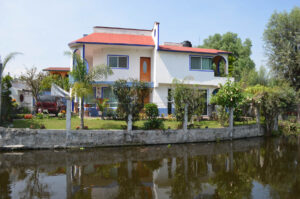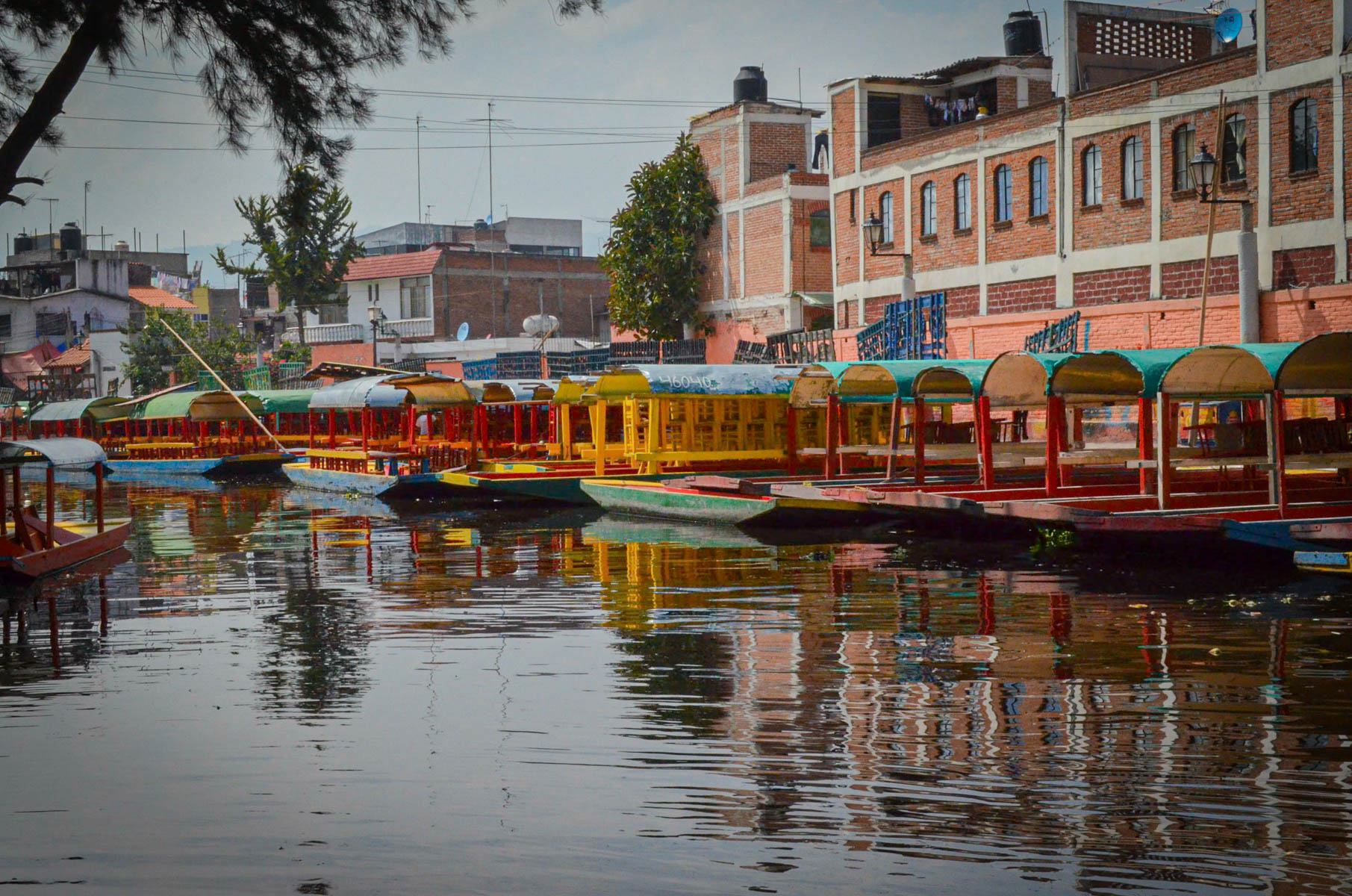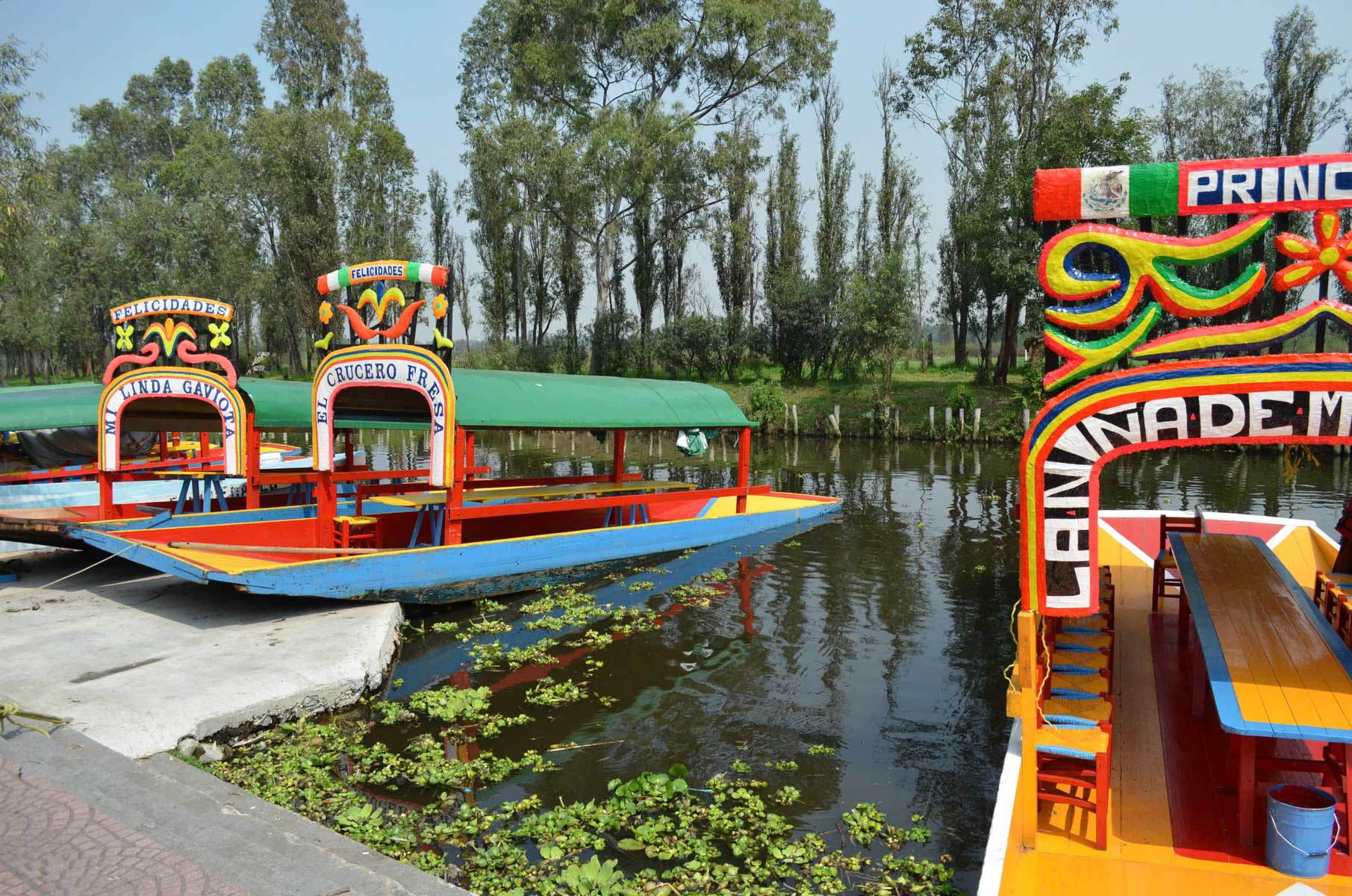From Aztec Origins to Modern-Day Cultural Hub
Nestled in the southern expanse of Mexico City, Xochimilco stands as a testament to the ingenuity of its early inhabitants and the enduring vibrancy of its cultural heritage. Renowned for its intricate canal systems and lush floating gardens, Xochimilco offers a unique glimpse into the past while embracing its dynamic present.
Aztec Foundations: The Emergence of Chinampas
The term “Xochimilco” derives from the Nahuatl language, combining xochitl (flower) and milli (field), aptly translating to “place of flowers.” In the 9th century, the Xochimilca people pioneered the creation of chinampas—man-made islands constructed by layering organic materials atop the shallow lakebed. These fertile plots enabled the cultivation of a diverse array of crops, including maize, beans, squash, and various flowers, facilitating year-round agricultural productivity. The interconnected canals not only served as transportation routes but also as vital trade arteries, linking Xochimilco to the heart of the Aztec Empire, Tenochtitlán.
From Aztec Dominance to Colonial Transformation
In 1430, Xochimilco was integrated into the Aztec Empire under Emperor Itzcoatl. Despite this incorporation, the region maintained a degree of autonomy, preserving its agricultural practices and cultural traditions. The arrival of Spanish colonizers in the 16th century introduced new agricultural techniques and crops, further diversifying the region’s agricultural landscape and blending indigenous and European influences.
UNESCO Recognition: A World Heritage Site
Acknowledging its historical and ecological significance, Xochimilco was designated a UNESCO World Heritage Site in 1987. This designation underscores the area’s exceptional value in illustrating the evolution of human settlements and land use, particularly through the chinampa agricultural system. The preservation of these practices offers invaluable insights into sustainable agriculture and cultural continuity.
Xochimilco Today: A Fusion of Tradition and Tourism
In contemporary times, Xochimilco has transformed into a vibrant cultural and tourist destination. Visitors can embark on colorful trajinera rides—traditional wooden boats adorned with flowers—navigating the historic canals. These excursions often coincide with local festivals, such as the Day of the Dead, where families honor their ancestors by decorating boats with marigolds and candles, creating a mesmerizing display on the water.
Artisans continue to thrive in Xochimilco, producing traditional crafts like pottery and embroidery, which are showcased in local markets and cultural events. The district’s commitment to preserving its artistic heritage ensures that these crafts remain integral to its cultural identity.
Environmental Challenges and Conservation Efforts
Despite its cultural vibrancy, Xochimilco faces significant environmental challenges. Urbanization, pollution, and the introduction of invasive species have threatened the delicate ecosystem of the canals and chinampas. The critically endangered axolotl, a unique aquatic species native to the area, has seen a drastic decline in population due to these environmental pressures.
Conservation initiatives are underway to address these issues. For instance, the “Chinampa Refuge” project aims to restore traditional farming practices and protect the remaining chinampas. Additionally, efforts are being made to promote sustainable tourism that minimizes environmental impact while supporting the local economy.
 Experiencing Xochimilco
Experiencing Xochimilco
For those interested in experiencing Xochimilco firsthand, consider visiting the Xochimilco Ecological Park. This area offers guided tours of the canals, educational programs about the chinampa farming system, and opportunities to learn about the region’s biodiversity. Engaging with local farmers and artisans provides deeper insight into the traditions and challenges of this unique area.
Xochimilco stands as a testament to the ingenuity and resilience of its people, blending ancient agricultural practices with modern cultural expressions. Its continued preservation is essential for maintaining the rich tapestry of Mexico City’s heritage.
